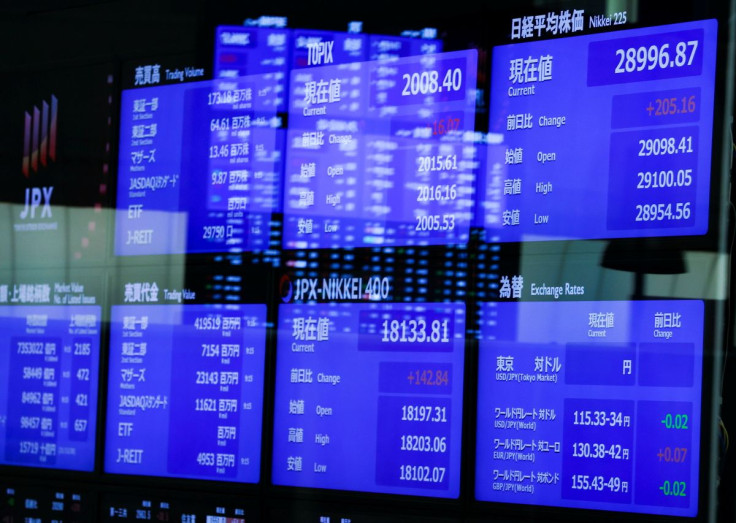Stocks Step Back, Oil Bounces As Peace Talks Stall

Stockmarkets took a breather on Friday after several days of sizeable gains, as geo-political tensions arising from the Ukraine conflict kept investors on guard going into the weekend.
After a fourth straight day of talks between Russian and Ukrainian negotiators without tangible progress, earlier hopes for a peace deal have begun to wane and oil prices have begun climbing again.
Adding to the mix, U.S. President Joe Biden is expected to deliver a warning that Beijing will pay a price if it supports Russia's war effort when he speaks to China's President Xi Jinping in a call scheduled for 1300 GMT.
MSCI's broadest index of Asia-Pacific shares outside Japan was flat and Hong Kong's Hang Seng steadied following a furious two-day surge. Japan's Nikkei rose 0.6%. S&P 500 futures eased 0.4% while Euro STOXX 50 futures and FTSE futures were flat. [.HK][.T]
Oil, which had crumbled some 30% from last week's peak, has bounced hard as traders fret that hope for peace in Ukraine is misplaced. Brent crude futures were last up 2% and at $108.64, have added more than $10 a barrel in two sessions.
"It's very difficult to get any confidence that you're going to be able to reliably source commodities out of Russia or Ukraine," said Tobin Gorey, a commodities strategist at Commonwealth Bank of Australia in Sydney. "You're going to be looking elsewhere and that just tends to get priced up."
Wheat and corn futures, which are sensitive to Black Sea supply disruptions, have bounced sharply. [GRA/]
Australia's miner-heavy ASX 200 index logged its best week since February last year and the commodities-sensitive Australian dollar hit a two-week high of $0.7398. [.AX][AUD/]
INVERSION
Problems faced by policymakers whose economies are suffering surging inflation and sagging growth were also underscored during a series of central bank meetings this week.
The U.S. Federal Reserve raised rates for the first time in more than three years on Wednesday, and surprised traders with a more hawkish than expected outlook. The Bank of England also hiked but surprised with a dovish outlook that drove a rally in gilts.
The Bank of Japan offered no surprises on Friday, leaving policy ultra easy, which has kept heavy pressure on the yen.
Japan's currency hit a six-year low of 119.13 this week and last traded at 118.78 per dollar. "The next multi-session target may well be the 120.00 psychological level," said Terence Wu, a strategist at OCBC Bank in Singapore. [FRX/]
The euro hovered at $1.1086.
Hong Kong's Hang Seng followed its worst session in more than six years with its biggest two-day rally since 1998 this week and rate cut hopes kept it bid on Friday. [.SS]
Treasuries steadied, but a flat yield curve that is flirting with inversion reflected worries about longer-term growth. The benchmark 10-year Treasury yield was last at 2.1780%.
Spot gold hovered at $1,932 and bitcoin was clinging on above $40,000.
© Copyright Thomson Reuters 2024. All rights reserved.







